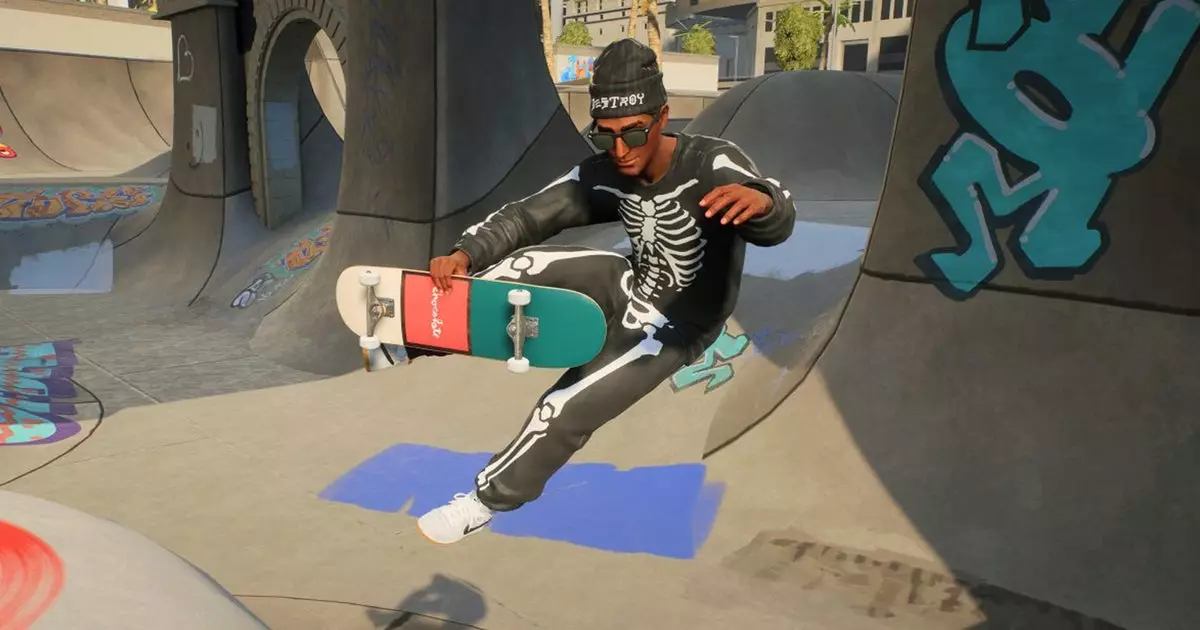Electronic Arts (EA) has embarked on a rather ambitious journey with its recently announced platform called “The Grind,” aimed at fostering direct communication between the company and its gaming community. This initiative is crucial for EA, particularly as it gears up for the highly anticipated reboot of its beloved Skate franchise. However, beneath this well-intended outreach lies a troubling aspect that gamers must confront: the trend of always-online gaming. It’s becoming increasingly clear that this isn’t just a design choice but a fundamental shift in how we engage with video games.
Offline Mode: A Desired Feature, or a Lost Cause?
During the inaugural session of The Grind, a prevalent inquiry revolved around the possibility of an offline mode for the new Skate game. In a rather dismissive manner, EA confirmed that players will have to remain perpetually connected to experience the game. The justification? They envision Skate as a “living, breathing massively multiplayer skateboarding sandbox.” This description sounds enticing, and undeniably the idea of a dynamic environment where the city evolves is intriguing. However, the desolation of offline gameplay raises significant red flags. Gamers are left questioning not only their access but also the longevity of their investment in a product that hinges on server stability and corporate decisions.
The Fortnight Effect: Gaming’s Evolving Landscape
EA’s model appears to mirror the ongoing trend popularized by Fortnite, where constant updates and in-game events churn out fresh content to engage users. While this might appeal to a segment of the player base that craves novelty, it also creates an ecosystem where the game becomes unplayable during server outages or technical failures. The experience of The Crew and its eventual shift toward providing offline modes speaks to the growing dissatisfaction with this “live service” model. Gamers should be wary of how these developments could undermine the very essence of enjoying a game at their own pace and on their terms.
Gameplay and Monetization: The Bright Side? Perhaps
Despite concerns about connectivity, EA has made an effort to address some key player anxieties. For one, they assure potential customers that the game will feature earnable rewards and customization options without necessitating out-of-pocket expenses. Furthermore, new areas will be accessible without restrictions, which seems promising for a more inclusive gaming experience. Yet, even amid these encouraging announcements, the specter of a pay-to-win environment lingers.
Critics might argue that even if the gameplay mechanics are fundamentally appealing, the online-only architecture detracts from the joy of traditional gaming. Players could feel coerced into a perpetual grind to keep pace with the community, thus obliterating the casual enjoyment that many seek.
In essence, while EA’s efforts to engage the Skate community demonstrate an earnest attempt to innovate and connect, the always-online paradigm raises substantial concerns. Players must critically evaluate the trade-offs between dynamic gameplay and the loss of personal agency that offline modes traditionally offer. As the gaming landscape continues to evolve, one has to wonder: Are we heading toward a future of deeply engaging experiences, or merely becoming players in an endless online grind?

